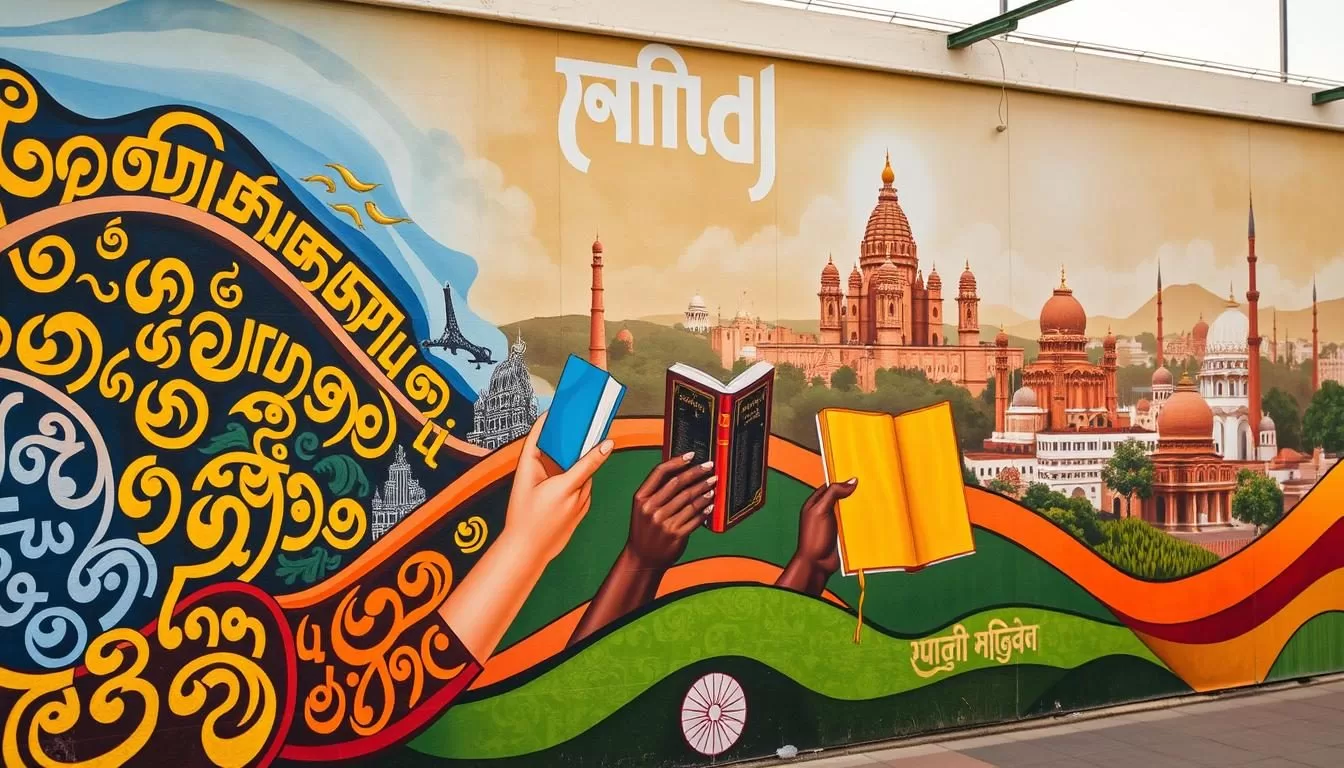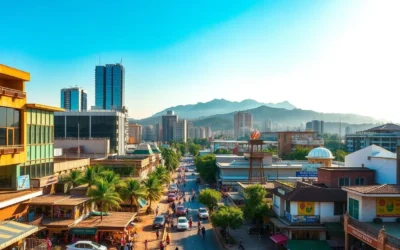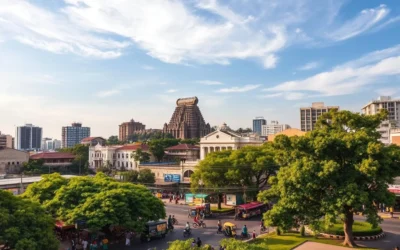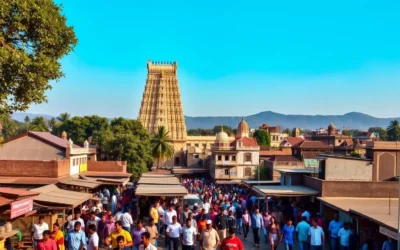✓ Accommodations ✓ Flights ✓ Rental Cars ✓ Tours & Activities
You’re about to explore the rich linguistic landscape of Tamil Nadu, a state in southern India known for its cultural diversity.
The state’s linguistic profile is shaped by historical migrations, cultural exchanges, and geographical proximity to neighboring states. Tamil is the official language of Tamil Nadu, but several other languages are also widely spoken across different regions.
As you delve into the language profile of Tamil Nadu, you’ll discover how the state’s linguistic heritage contributes to its unique cultural identity within India. Understanding the diverse languages spoken in the region provides valuable insights into its social dynamics and cultural heritage.
The Linguistic Landscape of Tamil Nadu
As you explore Tamil Nadu, you’ll discover a complex linguistic tapestry woven from its geographic location and population dynamics. Located in the southernmost part of India, Tamil Nadu is the sixth most populous state, with a population of over 72 million people.
Geographic and Demographic Context
Tamil Nadu is situated in the southeastern part of the Indian peninsula, bordered by Kerala, Karnataka, Andhra Pradesh, and the Bay of Bengal. This strategic location has historically influenced its linguistic landscape, with cultural and linguistic exchanges occurring across its borders. The state’s literacy rate stands at 80.09%, with male literacy at 86.77% and female literacy at 73.44%. 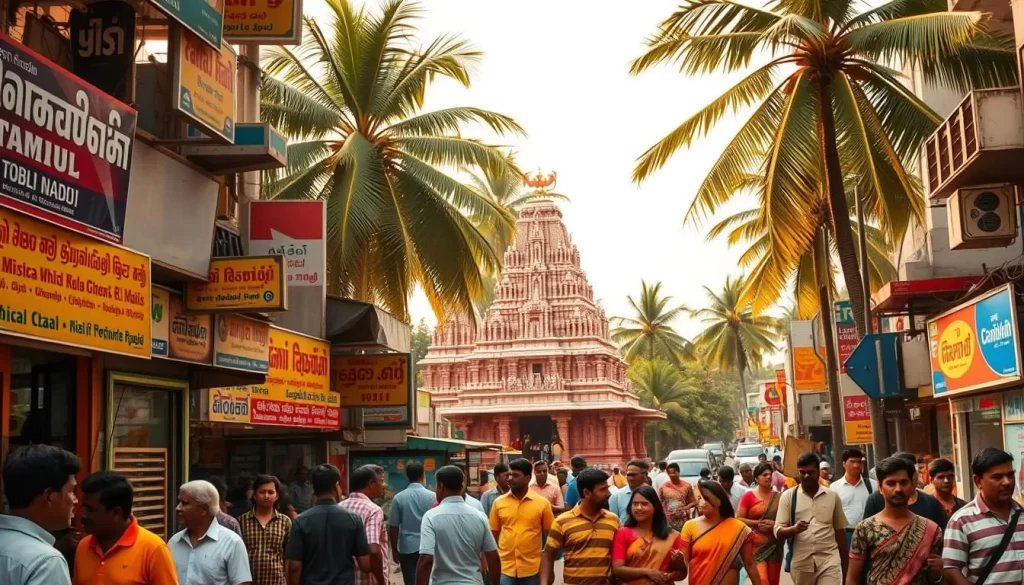
The demographic context of Tamil Nadu is characterized by a diverse population, with various ethnic and linguistic groups contributing to its cultural richness.
Language Diversity in Tamil Nadu
Tamil Nadu’s linguistic diversity reflects its rich history of trade, migration, and cultural exchange with neighboring regions and countries. While Tamil dominates as the primary language, significant populations speak Telugu, Kannada, Malayalam, and Urdu, particularly in border districts and urban centers. The state’s language diversity is also influenced by historical migrations, including communities that settled in Tamil Nadu centuries ago and maintained their linguistic traditions.
Urban centers like Chennai, Coimbatore, and Madurai showcase greater linguistic diversity due to economic opportunities attracting people from various linguistic backgrounds. The government of Tamil Nadu has implemented policies to preserve and promote the Tamil language while respecting the state’s linguistic diversity.
Tamil: The Official Language of Tamil Nadu, India
You might be fascinated to learn that Tamil, the official language of Tamil Nadu, is considered one of the oldest living languages in the world. With a rich history and cultural significance that spans over 2,000 years, Tamil is not just a means of communication but a vital part of the state’s identity.
Historical Significance of Tamil
Tamil has been an integral part of Indian culture for centuries, boasting a literary tradition that is both rich and diverse. The language is known for its poetry, drama, and other forms of literature that have been influential in shaping the cultural heritage of South India.
The historical significance of Tamil is further underscored by its status as a Dravidian language, distinct from the Indo-Aryan languages spoken in northern India. This distinction reflects the unique cultural heritage of the region and highlights the importance of Tamil in understanding the history and culture of South India.
Tamil as One of the World’s Oldest Living Languages
Tamil is recognized as one of the world’s oldest continuously spoken languages, with a history that dates back to ancient times. The language has evolved over the centuries, yet it remains vibrant and alive, with a vast collection of literature that includes the ancient Sangam literature.
The resilience of Tamil as a living language is a testament to the strong linguistic and cultural continuity in Tamil Nadu. Despite its ancient origins, modern Tamil continues to evolve, adapting to contemporary needs while maintaining its classical roots.
UNESCO Recognition as a Classical Language
In 2004, Tamil received recognition from UNESCO as a classical language, acknowledging its ancient origins, independent tradition, and distinctive literary heritage. This recognition places Tamil alongside other classical languages such as Sanskrit, Greek, and Latin.
| Language Feature | Description | Significance |
|---|---|---|
| Phonetic System | Unique system with 12 vowels and 18 consonants | Distinctive linguistic characteristic |
| Literary Tradition | Rich collection of poetry, drama, and literature | Cultural and historical significance |
| Script | Evolved over centuries, distinct from other scripts | Important for preserving cultural heritage |
Major Languages Spoken Across Tamil Nadu
As you explore Tamil Nadu, you’ll discover a rich tapestry of languages spoken by its population. While Tamil is the dominant language in Tamil Nadu, several other major languages are spoken across the state, contributing to its linguistic diversity.
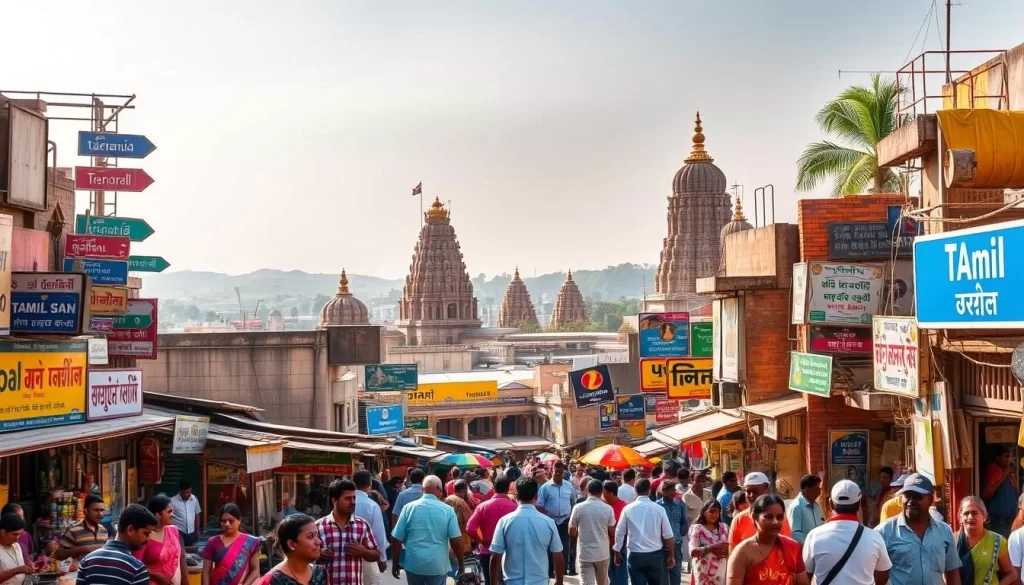
Telugu and Its Presence in Tamil Nadu
Telugu, an important Dravidian language, is spoken by a significant population in northern districts of Tamil Nadu, particularly in areas bordering Andhra Pradesh. You’ll find Telugu-speaking communities concentrated in districts like Tiruvallur, Chennai, and Vellore, where they maintain their linguistic and cultural traditions.
Urdu Communities in Tamil Nadu
Urdu, an Indo-Aryan language, has a notable presence in Tamil Nadu, particularly in urban centers with historical Muslim populations such as Trichy, Madurai, and parts of Chennai. The Urdu-speaking communities in Tamil Nadu have contributed significantly to the state’s cultural tapestry, particularly in literature, cuisine, and architecture.
Kannada Speakers in Border Regions
Kannada speakers are primarily found in the western districts of Tamil Nadu that border Karnataka, including areas of Krishnagiri, Dharmapuri, and Coimbatore districts. This highlights the linguistic diversity along the state’s borders.
English Usage in Urban Centers
Though English is spoken by only about 0.03% of Tamil Nadu natives as a first language, its usage as a second language has grown substantially, especially in urban centers. The growth of the IT industry, educational institutions, and tourism has increased the practical importance of English in cities like Chennai, Coimbatore, and Madurai.
| Language | Primary Speakers | Regions |
|---|---|---|
| Telugu | Significant population | Northern districts, bordering Andhra Pradesh |
| Urdu | Historical Muslim populations | Urban centers like Trichy, Madurai, Chennai |
| Kannada | Kannada speakers | Western districts bordering Karnataka |
| English | Urban populations, IT, education, tourism sectors | Urban centers like Chennai, Coimbatore, Madurai |
Regional Dialects and Minority Languages
You will find that Tamil Nadu is not just linguistically diverse but also culturally rich, with various dialects and minority languages. The state’s linguistic landscape is a testament to its complex history and geographical diversity.
Major Tamil Dialects in Tamil Nadu
Tamil, the predominant language of Tamil Nadu, is spoken in several dialects across the state. These dialects not only reflect the geographical diversity but also the cultural nuances of different regions.
Kongu Tamil
Kongu Tamil, spoken in the western regions including Coimbatore, Erode, and Salem, has distinct vocabulary, pronunciation, and grammatical features. It’s known for its unique intonation pattern and specific words not commonly found in other Tamil dialects.
Madras Bashai
Madras Bashai, associated with Chennai, is an urban dialect that incorporates words from various languages like English, Telugu, Hindi, and Urdu. This dialect is popular in cinema and casual conversations, giving it significant cultural relevance.
Other Notable Dialects
Other dialects include Nellai Tamil, Madurai Tamil, and those spoken in the southern districts, each with unique characteristics. The diversity of Tamil dialects enriches the linguistic heritage of Tamil Nadu.
Indigenous and Tribal Languages
Beyond Tamil dialects, Tamil Nadu is home to several indigenous and tribal languages. Tribal communities like the Todas, Kotas, and Irulas in the Nilgiri Hills maintain their distinct languages, classified as minority Dravidian languages.
| Tribal Community | Language | Region |
|---|---|---|
| Todos | Toda | Nilgiri Hills |
| Kotas | Kota | Nilgiri Hills |
| Irulas | Irula | Nilgiri Hills |
Languages such as Eravalla, Kadar, Kanikkaran, Vagriboli, and Kolimala are spoken by smaller tribal communities. These languages face challenges in preservation and require documentation efforts to safeguard Tamil Nadu’s cultural heritage.
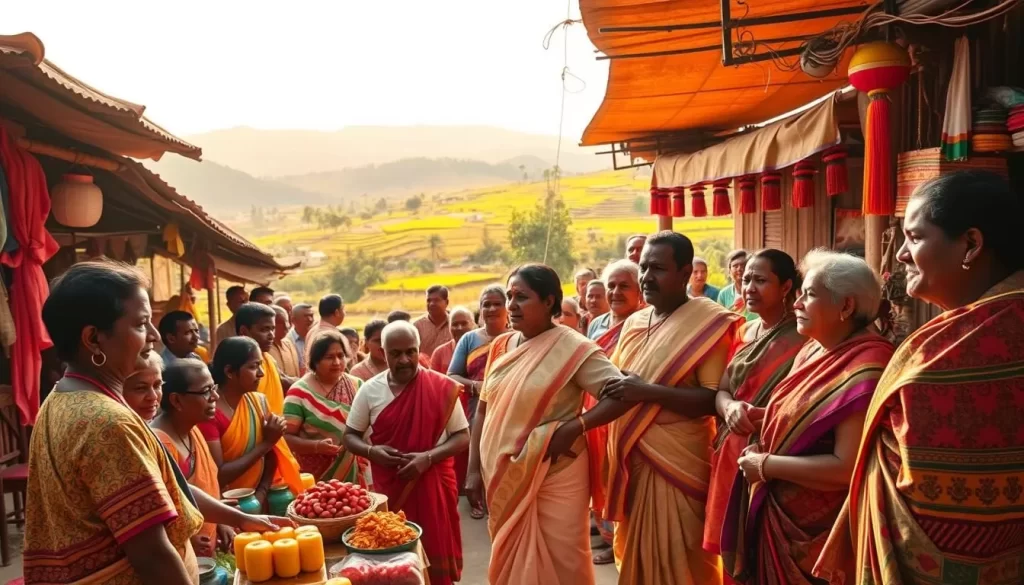
Tamil Beyond Borders: Global Presence
As you explore the global presence of Tamil, you’ll discover its widespread use across multiple countries. The Tamil language has become an integral part of various cultures worldwide, maintaining its significance as a Dravidian language.
Tamil in Sri Lanka
In Sri Lanka, Tamil is one of the official languages, spoken by approximately 25% of the population. This includes both Sri Lankan Tamils and Indian Tamils, each with distinct historical backgrounds. The Tamil language in Sri Lanka has developed unique features while remaining mutually intelligible with Indian Tamil.
Tamil Communities in Southeast Asia
Southeast Asia is home to substantial Tamil communities, particularly in Malaysia and Singapore. In Singapore, Tamil is one of the four official languages, with government services and education available in Tamil. Malaysian Tamil speakers constitute about 6.5% of the population, maintaining their linguistic and cultural traditions.
Tamil Speakers in Other Parts of the World
Tamil is also spoken in other parts of the world, including Mauritius, Fiji, South Africa, and Réunion Island. In Mauritius, around 3.5% of the population speaks Tamil. The global Tamil diaspora maintains connections to Tamil Nadu through cultural exchanges and media consumption.
| Country | Tamil Speakers (%) | Official Language Status |
|---|---|---|
| Sri Lanka | 25% | Yes |
| Singapore | 5% | Yes |
| Malaysia | 6.5% | No |
| Mauritius | 3.5% | No |
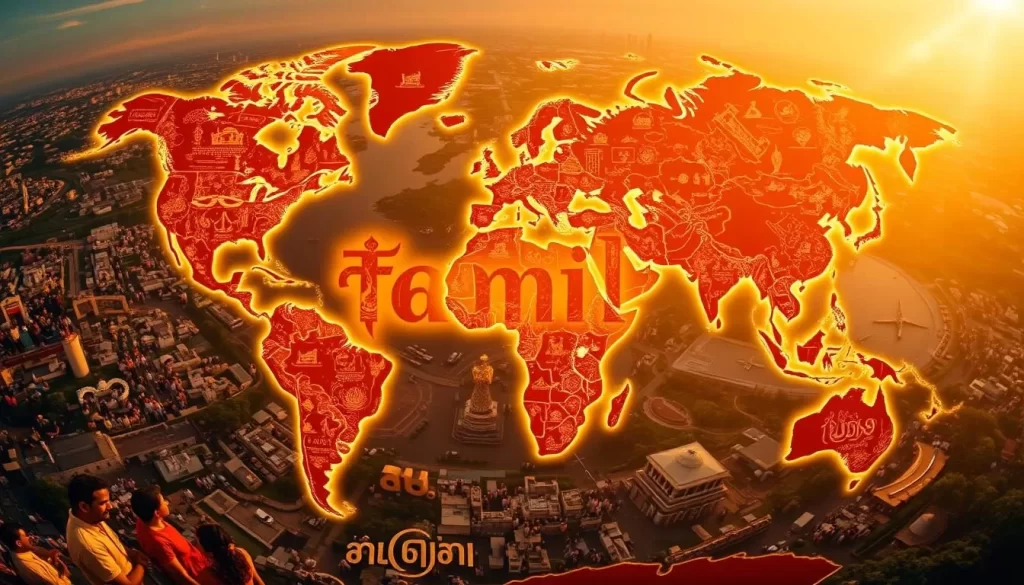
The global networking of Tamil speakers has been facilitated by digital technology and social media, creating new opportunities for language preservation and cultural exchange.
Conclusion: The Cultural Significance of Tamil Nadu’s Linguistic Heritage
As you explore Tamil Nadu, you’ll discover a linguistic heritage that is both diverse and vibrant. Tamil Nadu’s linguistic landscape represents a unique cultural heritage that has evolved over thousands of years, with Tamil serving as the cornerstone of the state’s identity. The coexistence of Tamil with other languages in the state demonstrates how linguistic diversity can enrich rather than diminish cultural identity. With a rich literary tradition and global presence, Tamil Nadu’s linguistic influence extends far beyond its geographical boundaries. The state’s efforts to preserve and promote Tamil highlight the importance placed on linguistic heritage.
The above is subject to change.
Check back often to TRAVEL.COM for the latest travel tips and deals.
